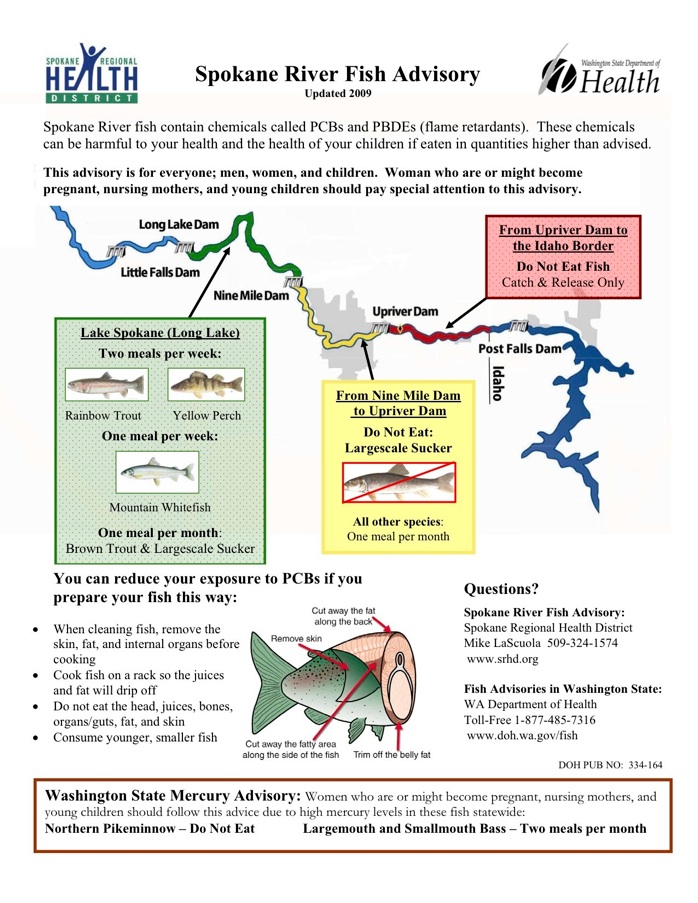The Spokane River flows 100 miles from north Idaho (outlet of Lake Coeur d’Alene) to Lake Roosevelt (reservoir behind Grand Coulee Dam) in Washington State. The River is polluted for a variety of nutrients and toxins, including polychlorinated biphenyls (PCBs), a legacy pollutant that bio-accumulates in fatty tissue of fish and poses health risks, particularly to children, pregnant women and people who eat a lot of fish from the river (including immigrants and homeless people). Spokane River PCBs have been listed on Washington’s Clean Water Act 303(d) list for several years. In addition, the Spokane Tribe of Indians (who eat fish from the river and live downstream of all point source discharges) adopted a very stringent PCB water quality standard based on tribal fish consumption data to protect their health.
PCB impairment for the Spokane River is substantial and poses a threat to public health. The Washington Department of Health has issued fish consumption advisories and closures because of PCB contamination. See below. The sources of PCBs include legacy pollutants (thought to be related to World War II airplane and munitions manufacturing in an area now within the Spokane County Sewage Treatment Plant service area), stormwater, active discharge from a paper recycling plant and other sources not yet identified.
The Washington Department of Ecology began preparing a Total Maximum Daily Loading (TMDL) for PCBs several years ago. The TMDL was held up for several years for both political and resource reasons, and in May 2011 the agency announced it would not issue a PCB TMDL at all. Meanwhile, Ecology subsequently issued NPDES permits to five existing dischargers in 2011. On November 29, the Department of Ecology issued a permit to a new discharger: the Spokane County wastewater treatment plant.
In October 2011, Sierra Club filed suit in U.S. District Court challenging the U.S. Environmental Protection Agency’s (USEPA) failure to prepare a PCB TMDL for the Spokane River.
Sierra Club Upper Columbia River group (UCR) began actively discussing the Spokane County NPDES permit with the Washington Department of Ecology, USEPA, and Spokane County in 2004. UCR has sent many letters, participated in formal and informal meetings and discussions, engaged in outreach to its members and generally been a leading advocate on the issue of the need to clean up the Spokane River for PCBs, as well as other pollutants. UCR’s Spokane River Project has been actively engaged in protecting and restoring water quality for decades, including involvement in the Coeur d’Alene basin toxic Superfund cleanup, Avista dam relicensing, and Clean Water Act activities relating to TMDLs, NPDES permits, and CSOs.






